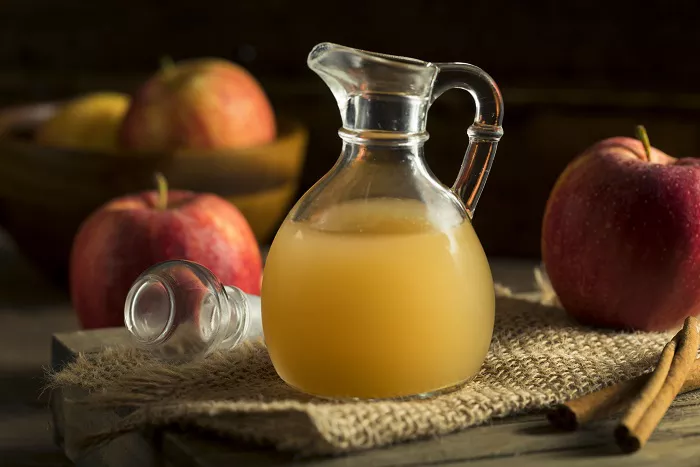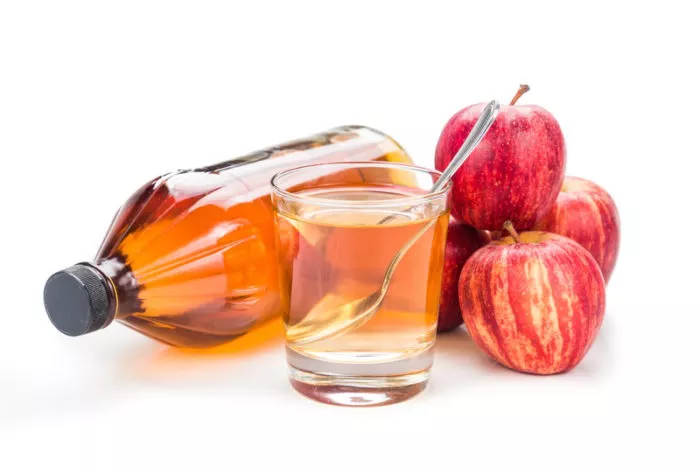Apple cider vinegar (ACV) has gained popularity as a home remedy for various ailments, including yeast infections. However, determining the appropriate dosage and application of ACV for yeast infections is crucial for safe and effective treatment.
In this guide, we’ll explore the use of apple cider vinegar for yeast infections, including dosage recommendations, application methods, and important considerations to keep in mind.
Understanding Yeast Infections
Before delving into the use of apple cider vinegar, it’s essential to understand what yeast infections are and how they occur. Yeast infections, also known as candidiasis, are caused by an overgrowth of Candida albicans, a type of fungus that naturally resides in the body. When the balance of yeast and bacteria in the body is disrupted, typically due to factors such as antibiotics, hormonal changes, or a weakened immune system, yeast can proliferate, leading to infection.
Common symptoms of yeast infections include:
- Itching and irritation in the genital area
- Burning sensation during urination or intercourse
- Redness and swelling of the vulva or vagina
- Cottage cheese-like discharge
If you suspect you have a yeast infection, it’s essential to consult with a healthcare professional for an accurate diagnosis and appropriate treatment plan.
Using Apple Cider Vinegar for Yeast Infections
Apple cider vinegar is believed to have antifungal properties that may help inhibit the growth of yeast and alleviate symptoms of yeast infections. However, it’s crucial to use ACV properly to avoid irritation or adverse effects. Here are some guidelines for using apple cider vinegar for yeast infections:
1. Dilute the apple cider vinegar:
ACV is highly acidic and can cause irritation or burns if applied directly to the skin or mucous membranes. It’s essential to dilute ACV with water before using it topically or orally. A common ratio for dilution is 1 tablespoon of ACV per 1 cup of water.
2. Topical application:
To use apple cider vinegar topically for yeast infections, mix the diluted ACV with water and apply it to the affected area using a clean cloth or cotton ball. Gently pat the area dry afterward. Avoid applying undiluted ACV directly to the skin, as it can cause irritation.
3. Oral consumption:
Some people also choose to consume diluted apple cider vinegar orally as a remedy for yeast infections. Mix 1 to 2 tablespoons of ACV with a large glass of water and drink it once or twice daily. It’s important to drink plenty of water throughout the day to stay hydrated and help flush out toxins.
Important Considerations and Precautions
While apple cider vinegar may offer relief for some individuals with yeast infections, it’s not a substitute for medical treatment, especially in severe or recurrent cases. Here are some important considerations and precautions to keep in mind when using ACV for yeast infections:
1. Consult with a healthcare professional:
Before using apple cider vinegar or any home remedy for yeast infections, it’s crucial to consult with a healthcare professional, especially if you have underlying health conditions or are pregnant.
2. Discontinue use if irritation occurs:
If you experience any irritation, burning, or discomfort after using apple cider vinegar, discontinue use immediately and rinse the affected area with water. Consult with a healthcare professional if symptoms persist or worsen.
3. Use caution with oral consumption:
While drinking diluted apple cider vinegar is generally considered safe for most people, excessive consumption can lead to digestive issues or tooth enamel erosion due to its acidity. Start with a small dosage and monitor your body’s response.
Conclusion
Apple cider vinegar may offer potential benefits for individuals with yeast infections due to its antifungal properties. However, it’s essential to use ACV safely and responsibly, following proper dosage and application guidelines.
Remember to consult with a healthcare professional for personalized advice and treatment recommendations, especially if you have underlying health conditions or are pregnant. With careful use and guidance, apple cider vinegar can be a valuable addition to your arsenal of natural remedies for yeast infections.























